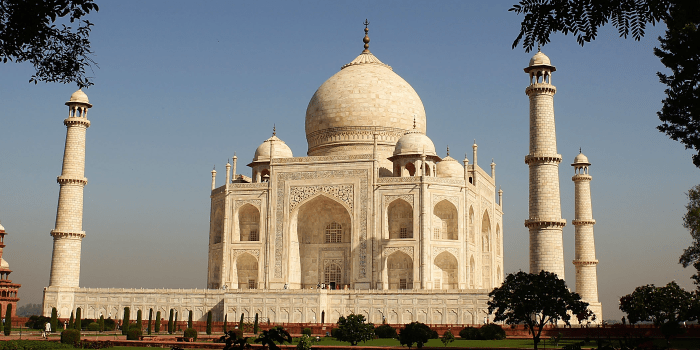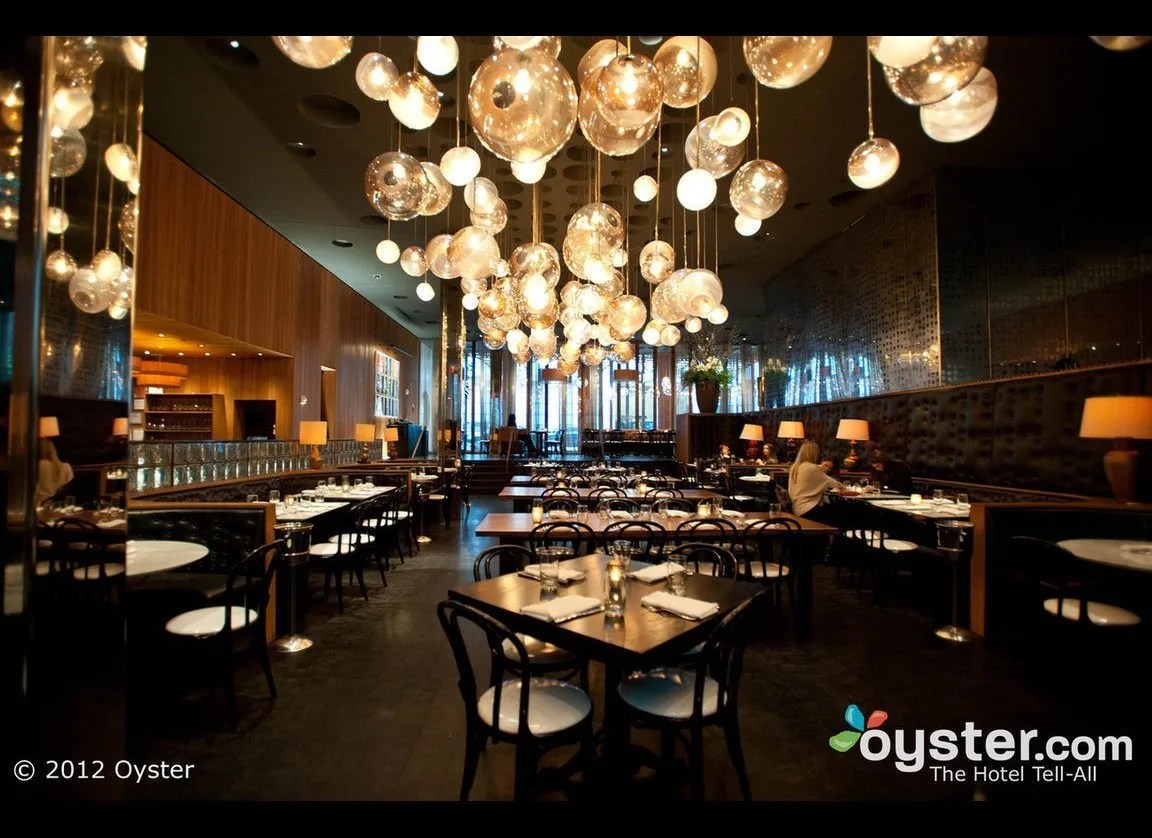How to locate hotels near popular tourist attractions sets the stage for an enthralling journey into the heart of travel planning. Whether you’re a seasoned globetrotter or a first-time explorer, finding the perfect hotel that complements your sightseeing adventures can enhance your experience. From iconic landmarks to hidden gems, having a comfortable base nearby can make all the difference in your travel enjoyment.
This guide delves into the art of identifying tourist attractions and the techniques for locating nearby hotels. By categorizing these attractions and exploring various online platforms, you can filter your options effectively. Moreover, understanding hotel amenities and customer reviews will equip you with the tools needed to make informed choices, ensuring your accommodations are as memorable as the sights you plan to visit.
Identifying Tourist Attractions

Exploring popular tourist attractions is essential for travelers aiming to maximize their experience in any city. Understanding what a city has to offer can shape the itinerary and enhance the overall visit. From world-renowned landmarks to hidden gems, identifying these attractions effectively allows visitors to plan their stay around them.To categorize attractions based on visitor interest, one can consider the different types of experiences sought by travelers.
These can be art and culture, history, adventure, nature, or food. By analyzing these interests, travelers can prioritize which attractions to visit based on personal preferences and available time.
Popular Tourist Attractions in Major Cities
When visiting major cities, being aware of the most frequented tourist attractions is key. Here’s a list of some iconic sites that travelers often seek out:
- New York City: Statue of Liberty, Central Park, Times Square, and the Metropolitan Museum of Art.
- Paris: Eiffel Tower, Louvre Museum, Notre-Dame Cathedral, and Montmartre.
- Tokyo: Tokyo Tower, Senso-ji Temple, Shibuya Crossing, and the Imperial Palace.
- London: Big Ben, Buckingham Palace, the British Museum, and the Tower of London.
- Rome: Colosseum, Vatican City, Trevi Fountain, and the Pantheon.
Recognizing these sites helps travelers to plan their hotel accommodations conveniently nearby, ensuring they are close to the action.
Browse the implementation of What are the best hotels for family vacations in real-world situations to understand its applications.
Discovering Lesser-Known Attractions, How to locate hotels near popular tourist attractions
While well-known attractions are a must-see, lesser-known spots can offer unique experiences and often less crowded environments. Finding these hidden gems can augment a traveler’s journey, providing a more intimate exploration of the city. Some effective methods to discover these attractions include:
- Local Guides: Engaging with local tour guides who can share insights into lesser-known sites based on their knowledge and expertise.
- Social Media: Utilizing platforms like Instagram or travel blogs where travelers share their experiences and recommendations of off-the-beaten-path locations.
- Travel Forums: Participating in travel forums such as TripAdvisor or Reddit, where locals and experienced travelers discuss hidden attractions that often go unnoticed.
- Walking Tours: Joining walking tours that focus on specific neighborhoods can reveal intriguing sights and stories that standard tourist routes may overlook.
By utilizing these methods, travelers can uncover attractions that resonate with their interests while ensuring proximity to suitable hotel accommodations, enriching their overall travel experience.
Techniques for Locating Hotels

Finding a hotel that is conveniently located near popular tourist attractions can greatly enhance the travel experience. With numerous online platforms and tools available, travelers have a wealth of resources at their disposal to pinpoint the ideal lodging. This section will explore various methods and techniques for locating hotels efficiently.
Online Platforms for Hotel Searches
The internet has revolutionized the way travelers search for hotels. Several platforms offer specialized services that cater to different needs, allowing users to find accommodations that align with their preferences and budget. Utilizing these online resources can save time and ensure that visitors are close to the attractions they wish to explore.
- Booking.com: This platform provides an extensive list of hotels and allows users to filter searches by proximity to specific tourist spots. Users can also read reviews and compare prices directly.
- Expedia: In addition to hotel listings, Expedia offers package deals that include flights and car rentals, making it easier to plan an entire trip while ensuring accommodation is near desired attractions.
- Airbnb: For a more localized experience, Airbnb offers unique lodging options that may be nearer to tourist sites, giving travelers a taste of local life.
- TripAdvisor: Known for its reviews, TripAdvisor also provides filtering options to find hotels based on distance from attractions, making it a reliable source for recommendations.
Advantages of Using Map Services for Hotel Location
Map services such as Google Maps and Apple Maps play a crucial role in hotel searches by providing a visual representation of the area. These tools allow travelers to see the relationship between hotels and tourist attractions, making it easier to identify the best locations.The key benefits of utilizing map services include:
- Visual Context: Maps provide a layout of the area, helping users understand the distance between hotels and attractions.
- Real-Time Navigation: Users can access real-time directions to their chosen hotel from various locations, ensuring convenience upon arrival.
- Nearby Amenities: Apart from hotels, map services show nearby restaurants, shops, and other amenities, offering a comprehensive view of what an area has to offer.
Filtering Hotel Searches Based on Proximity to Attractions
Finding a hotel close to your desired tourist attractions can be streamlined through effective filtering techniques. Many online platforms come equipped with options that allow travelers to specify their requirements. To filter hotel searches effectively, follow these steps:
- Enter Destination: Start by entering the city or specific tourist attraction in the search bar of the chosen hotel booking platform.
- Select Check-In and Check-Out Dates: Specify your travel dates to narrow down available options.
- Use Proximity Filters: Look for filter options such as “nearby attractions” or “within X miles of” to refine your search based on distance.
- Review Listings and Map View: Check the listings that appear and utilize the map view to visually assess the proximity of hotels to your selected attractions.
- Read Reviews: Ensure to read user reviews for insights on the convenience of location and overall quality of the hotels.
Utilizing these techniques can significantly enhance the hotel-searching experience, making it easier for travelers to find suitable accommodations in proximity to the attractions they wish to visit.
Evaluating Hotel Options: How To Locate Hotels Near Popular Tourist Attractions
When planning a trip, selecting the right hotel is crucial for enhancing the overall experience, especially when proximity to popular tourist attractions is a priority. Evaluating hotel options involves considering various factors that can significantly impact your stay, from available amenities to customer feedback. Understanding how to assess these elements will help you make an informed decision that balances comfort, convenience, and cost-effectiveness.
Comparison of Amenities Offered by Hotels
Choosing a hotel goes beyond just location; the amenities provided can greatly influence your comfort and enjoyment. Hotels near tourist attractions often offer a range of amenities tailored to enhance guest experiences. Here are some key amenities to consider when comparing hotels:
- Free Wi-Fi: Essential for staying connected, especially for travelers who need to plan their itinerary on the go.
- Breakfast Options: Many hotels provide complimentary breakfast, which adds value and convenience for guests.
- Fitness Facilities: For health-conscious travelers, access to a gym or pool can be a significant factor in their decision.
- Concierge Services: Helpful for booking tours, obtaining tickets, or making reservations at nearby attractions.
- Room Features: Consider the importance of air conditioning, flat-screen TVs, or kitchenettes based on your preferences.
Evaluating amenities helps ensure that the hotel aligns with your expectations and needs, enhancing your overall trip experience.
Assessment of Customer Reviews
Customer reviews serve as a valuable resource when evaluating hotels located near attractions. They provide insights into the experiences of previous guests and can highlight both strengths and weaknesses. To effectively assess reviews, consider the following aspects:
- Relevance: Focus on reviews that mention proximity to attractions and the quality of service related to those locations.
- Recency: Look for the most recent reviews to get a current perspective on the hotel’s standards and amenities.
- Consistency: Observe patterns in reviews; if multiple guests mention the same issue or highlight a specific positive feature, it’s likely to be accurate.
- Response from Management: Hotels that actively respond to reviews demonstrate a commitment to customer satisfaction and may indicate a well-managed property.
By analyzing customer feedback effectively, travelers can gain a clearer understanding of what to expect, helping them make more informed decisions.
Determining the Best Hotel Value
Finding the best hotel value requires evaluating the cost in relation to the benefits offered, especially when considering proximity to attractions. Here are criteria to consider when determining value:
- Price Comparison: Compare prices across similar hotels that offer comparable amenities and services.
- Location Benefits: Assess how much extra you are willing to pay for the convenience of being near popular sites.
- Package Deals: Check for bundled offers that include accommodations with guided tours or attraction tickets for additional savings.
- Flexibility in Booking: Hotels that offer flexible cancellation policies may provide added value if your travel plans change.
- Seasonal Discounts: Look for off-peak pricing or promotions that can significantly reduce costs without sacrificing quality.
By applying these criteria, travelers can ensure they find a hotel that not only fits their budget but also maximizes the enjoyment of their visit to nearby attractions.
Planning Your Stay

When it comes to enjoying a vacation, planning your stay is one of the most critical aspects. A well-thought-out hotel arrangement can enhance your experience by providing comfort, convenience, and accessibility to popular tourist attractions. This section will present a checklist for booking hotels, strategies for balancing costs with accessibility, and a sample itinerary to streamline your travel plans.
Checklist for Booking Hotels Near Tourist Attractions
Creating a checklist can simplify the process of booking your hotel and ensure that you cover all essential factors. Here’s a useful checklist to consider:
- Determine your budget: Establish a clear budget for hotel accommodation to filter options effectively.
- Identify preferred locations: Choose areas near the attractions you plan to visit to minimize travel time.
- Check amenities: Look for essential amenities such as Wi-Fi, breakfast, parking, and air conditioning.
- Read reviews: Utilize platforms like TripAdvisor or Google Reviews to gauge previous guests’ experiences.
- Compare prices: Use comparison websites to find the best deals among different hotels.
- Check cancellation policies: Understand the terms in case your travel plans change unexpectedly.
Strategies for Balancing Hotel Costs with Attraction Accessibility
Finding the right balance between hotel costs and access to attractions can significantly improve your travel experience. Consider the following strategies:
- Prioritize location over luxury: A modest hotel in a prime location can save time and transport costs.
- Consider public transport: Hotels a bit farther away can be economical if public transport is readily available.
- Book early: Early bookings often come with discounts, so plan and secure your reservations in advance.
- Look for packages: Some hotels offer packages that include attraction tickets, providing better overall value.
- Travel during off-peak seasons: Rates are generally lower when traveling outside peak tourist seasons.
Sample Itinerary Including Hotel Check-in and Nearby Attractions
To help you visualize a structured travel plan, a sample itinerary that includes hotel check-in and nearby attractions can be beneficial. Here’s a hypothetical itinerary for a one-day stay:
| Time | Activity | Location |
|---|---|---|
| 3:00 PM | Hotel Check-in | Downtown Hotel |
| 4:00 PM | Visit City Museum | 5-minute walk |
| 6:00 PM | Dinner at Local Bistro | 10-minute walk |
| 7:30 PM | Evening Stroll at Central Park | 15-minute walk |
| 9:00 PM | Return to Hotel | 20-minute walk |
This itinerary allows for a seamless exploration of nearby attractions while ensuring a comfortable hotel stay. Each component is designed to maximize enjoyment and minimize travel hassle, exemplifying effective planning for an enjoyable vacation.